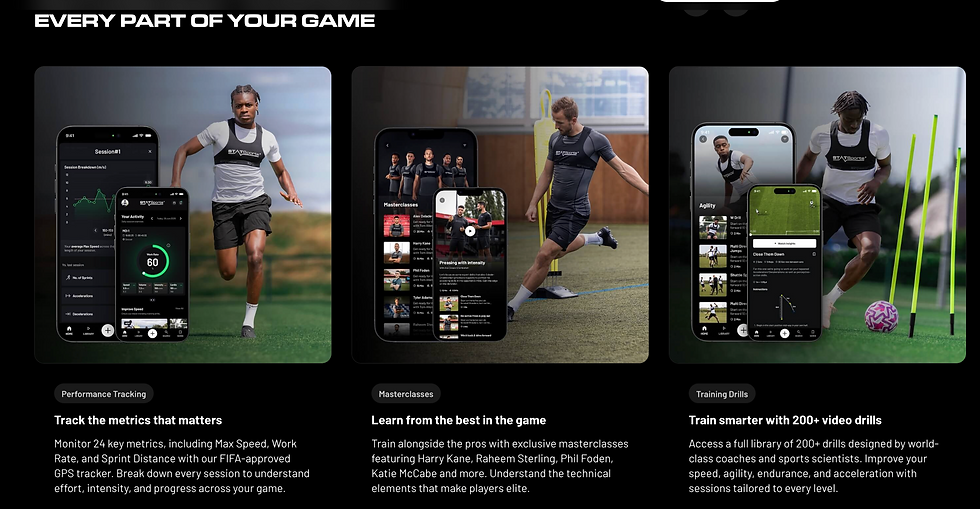What do Pro Club Scouts in Europe look for in North American players
- Ian McClurg - MSc Performance Coaching

- Dec 31, 2024
- 4 min read
European soccer scouts at professional clubs typically look for a combination of technical, physical, tactical, and mental attributes when scouting North American players. The challenge for scouts at professional clubs in Europe is that they typically cannot guage the level of competition in Canada with league play in Europe. For example, how does CPL or League 1 compare to other leagues in the UK, Spain, Portugal, Italy and Germany.
Game video and performance data does assist with the initial analysis of players and if scouts at ,clubs in Europe have an interest in a player then they will request that a North American player travels to Europe for further evaluation. This will involve training with players at their own club and/or playing in exhibition trial games.
While individual preferences may vary depending on the club’s playing style or needs, some common qualities that are generally prioritized by professional clubs scouts include:
1. Technical Ability
• Ball Control & First Touch: European soccer places a high emphasis on the ability to control the ball under pressure and in tight spaces. A player’s first touch is often a key indicator of their technical skill.
• Passing Range & Vision: Scouts assess how well players can execute short, medium, and long passes, as well as their vision to make creative or effective passes in tight situations.
• Dribbling & Close Control: Ability to dribble past defenders with close control and change direction quickly is valued, especially for attacking players.

2. Tactical Awareness & Intelligence
• Positioning & Movement: Understanding of positioning, both with and without the ball, is crucial. Scouts look for players who make intelligent runs, create space, and can read the game effectively.
• Decision Making: Players who can make quick, smart decisions under pressure are highly valued. European scouts want players who can play the ball at the right time and in the right manner.
• Defensive Awareness: For defensive players or midfielders, tactical understanding, such as reading the game to intercept passes, tracking runners, and positioning to block attacks, is crucial.
3. Physical Attributes
• Speed & Agility: European scouts look for players with good acceleration, top-end speed, and agility, especially those who can transition quickly between attack and defense.
• Endurance & Stamina: Physical endurance is important, as the pace of European soccer can be intense. Scouts look for players who can maintain high levels of performance throughout the match.
• Strength & Durability: Physical strength, especially for defenders and midfielders, is crucial in European leagues. The ability to hold off challenges or win duels is often a key evaluation point.

4. Mental Attributes
• Work Ethic & Attitude: A player’s mentality and attitude toward training, games, and teamwork are important. European clubs value players who are disciplined, coachable, and committed to improving.
• Resilience & Composure: Players who remain calm under pressure and don’t get rattled by mistakes or setbacks are highly regarded.
• Leadership & Character: Especially for older or more experienced players, the ability to lead by example and motivate teammates is a trait scouts value.
5. Cultural Fit & Adaptability
• Adaptability to European Style: Some scouts pay attention to how well a North American player adapts to the faster pace and more technical style of European football. Players who show the ability to transition quickly tend to be more attractive targets.
• Language and Personality: While not always critical, scouts may consider how well a player will fit into the team’s culture, including communication skills and personality. A player who can easily integrate into the team’s dynamics is often more desirable.
6. Specific Position-Based Requirements
• Goalkeepers: Reflexes, shot-stopping ability, communication with the defense, and playing out from the back are key attributes.
• Defenders: Positioning, tackling, aerial duels, and passing range (for center-backs) or pace and crossing (for full-backs) are closely watched.
• Midfielders: Passing range, vision, stamina, and defensive work-rate, in addition to creativity and flair for more attacking midfielders, are prioritized.
• Forwards: Finishing ability, movement off the ball, pace, and link-up play are key components for attacking players.
7. Performance in Competitive Environments
• International Experience: European scouts may be impressed by North American players who perform well at the international level (e.g., with the U.S. Men’s or Women’s National Team, Canadian National Team, or youth national teams). International tournaments or friendly matches against strong European sides can serve as valuable showcases.
• League Quality: Scouts also evaluate players’ performances in competitive leagues, such as Major League Soccer (MLS) or the Canadian Premier League (CPL). While these leagues are often considered less competitive than the top European leagues, standout players in these leagues are still attractive if they show exceptional ability.
8. Work Rate and Versatility
• Position Flexibility: Scouts may look for players who can perform well in multiple positions or adapt to different tactical systems, as this provides greater value to a club.
• High-Pressing Ability: In modern European football, high pressing and being able to win the ball high up the pitch is a growing trend, especially for forwards and attacking midfielders.
Summary
European soccer scouts tend to focus on technical proficiency, game intelligence, physicality, and a player’s mental and tactical maturity. North American players who stand out often do so by showcasing technical ability, strong work ethics, adaptability, and the ability to thrive in highly competitive environments. Additionally, any international experience, particularly against European teams or in international tournaments, can boost a player’s appeal to scouts.



